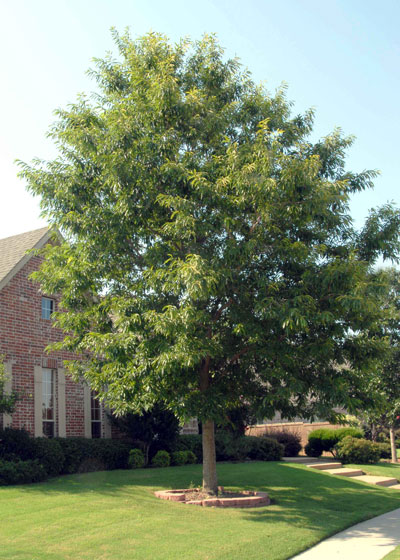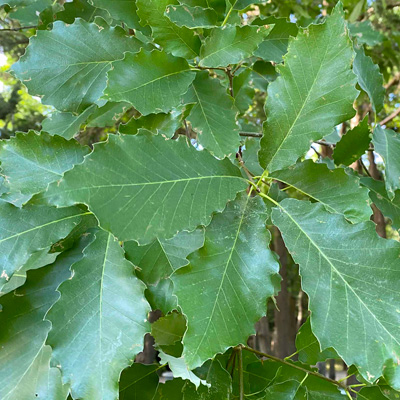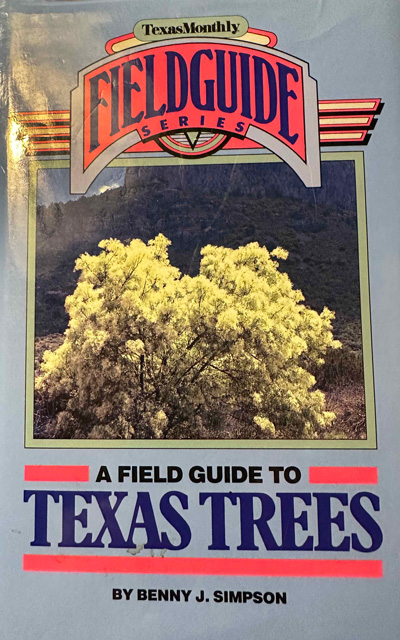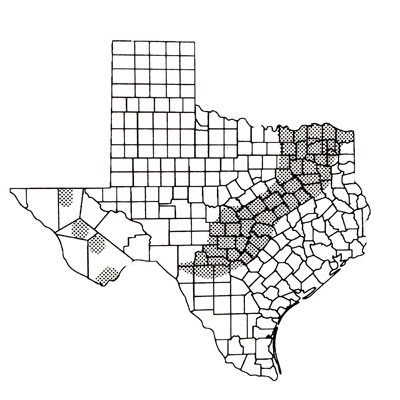Chinquapin Oak Comes of Age
It’s been in Texas longer than there’s been a Texas. Funny that we gardeners never paid much attention to it.

Chinquapin oak, in the past 30 years, has become one of our most frequently planted shade trees, and we’re all blessed by its presence.
Credit where it’s due: the late Benny Simpson, everybody’s favorite horticulturist at the Texas A&M Research and Extension Center in Dallas, told me about this beautiful tree. Benny and I worked alongside one another, and when he got excited about a plant, I knew I needed to be listening. After all, he was the one who put me on to Warren’s Red possumhaw hollies and Oklahoma redbuds.
By that same token, Benny told me about Chinquapin oaks, even telling me where I could find them growing natively within just a few miles of the new home Lynn and I had just built outside McKinney. (It turned out that Benny and we were near neighbors, so he knew his way around Collin County quite well.)
The more I learned about Chinquapin oaks, the more I realized how few I was seeing out in landscapes in DFW. A couple at the Dallas Arboretum. Some in other native environments. One street lined with them in University Park. But not anywhere near the big numbers you see nowadays.

If I’ve had any small part in helping this plant become better known, I’m happy with that. But it all reflects back to Benny and his encouragement. As usual, his advice was spot-on.

In recognition of my friend the late Benny Simpson, I’m going to take all of my notes below from his book A Field Guide to Texas Trees. Benny brought a signed copy to our house when it came in. Printed in 1988 by Texas Monthly Press.
What you need to know about this plant…
• Chinquapin oak (Quercus muhlenbergii)
• Common names: Chinkapin oak, chestnut oak, yellow oak, Chinquapin oak
• Grows to: 90 ft. (Neil’s note: Usually in the range of 50-60 ft. in urban settings)

• Occurs on the well-drained, deeper soils of river and creek bottoms; on the limestone soils of the Blackland Prairie and Edwards Plateau; and also in small, isolated groves in the mountains of the Trans-Pecos and the post oak savannas of northeastern Texas.
Benny went on to describe where he found the tree growing in the Del Norte, Glass and Guadalupe Mountains in the Trans-Pecos, also in the Chisos Mountains (Big Bend National Park) and the heart of the Davis Mountains.
I have found this to be a relatively fast-growing species of oak for Texas landscapes. I’m especially fond of its attractive bark and dark green, elongated leaves. They have a very characteristic look among oaks. Fall leaf color is unremarkable, yellow. The tree is rather oval in its youth, rounding out as it matures.
When people ask me to recommend the best shade trees for Texas, this is one of the seven I put on every list that I give. I have several Chinquapin oaks, and I’m proud to suggest them to anyone needing a handsome new shade tree.
